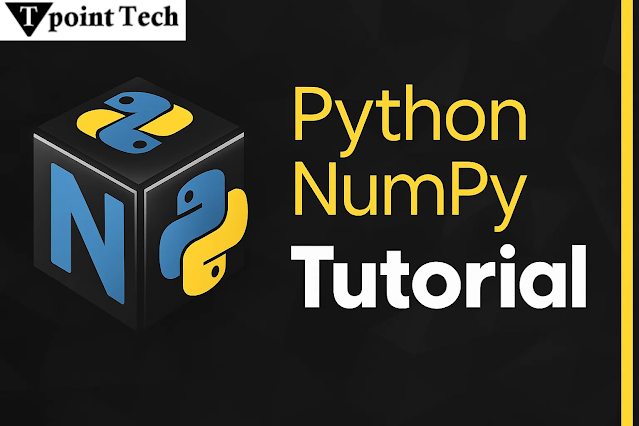C Tutorial | Learn C Programming with Real Examples
In the world of programming, few languages are as respected, versatile, and foundational as C. It’s the language that paved the way for modern computing and continues to influence the architecture of today’s operating systems, embedded software, and performance-critical applications.
This C Tutorial from Tpoint Tech is crafted for beginners, students, and professionals who want to learn C programming language with real-world insights and conceptual clarity—without getting overwhelmed by syntax in the beginning. Whether you're preparing for a programming course, entering a tech career, or just starting your coding journey, this tutorial is your perfect starting point.
Why Learn C Programming Language?
C is a procedural programming language developed in the early 1970s, and it remains the foundation for many modern languages like C++, Java, Python, and even newer low-level systems like Rust. It is known for its simplicity, performance, and close-to-hardware access, making it the go-to choice for system programming, embedded development, and performance-critical applications.
Key Benefits of Learning C:
-
Helps you understand how computers work under the hood
-
Builds a solid foundation in logic and programming structure
-
Enhances your ability to debug, analyze memory, and optimize code
-
Improves understanding of algorithms, data structures, and the compilation process
Once you learn the C programming language, transitioning to other languages becomes much easier.
Understanding the Basics of C
Before diving into real-world applications, it’s essential to get familiar with some core concepts that make up the C language.
1. Procedural Programming
C follows a procedural approach, which means you write a set of instructions step-by-step. Each function performs a specific task, and the program follows a logical flow from start to finish.
2. Data Types and Variables
C supports a wide range of data types like integers, floating-point numbers, characters, and more. Understanding how memory is allocated to different types is crucial, especially in system-level programming.
3. Control Structures
Control structures like if-else statements, loops, and switch cases help determine the logical flow of the program. These are building blocks of decision-making and repetition in C.
4. Functions
Functions in C allow you to break down complex problems into smaller, manageable blocks. This makes your code modular, readable, and reusable.
Real-World Applications of C
One of the best ways to learn C programming language is by connecting it to real-world use cases. Here are some common areas where C is widely used:
1. Operating Systems
The core of many operating systems like Unix, Linux, and Windows is written in C. Its speed and low-level capabilities allow direct manipulation of memory and system resources.
2. Embedded Systems
From microwaves and printers to IoT devices and medical equipment, C is the standard language for embedded software due to its performance and efficiency.
3. Game Development
C is often used in game engines and graphic libraries because it can handle performance-heavy tasks and optimize memory usage effectively.
4. Compilers and Interpreters
Many popular programming language compilers and interpreters are built using C. This includes languages like Python and Perl.
5. Device Drivers and Hardware Interaction
Since C allows low-level access to memory and hardware, it is ideal for writing drivers that communicate directly with devices like keyboards, hard drives, and network adapters.
C Programming Concepts in Action
Understanding C becomes easier when you relate its concepts to practical situations. Let’s walk through a few real-world analogies:
Variables and Memory Management
Think of variables as labeled boxes where you store data. C gives you manual control over where those boxes are placed (memory) and how they are accessed or deleted. This is vital in building fast, memory-efficient applications.
Loops and Conditions
Imagine you're automating a task like checking hundreds of files in a directory. Using loops and conditions in C, you can instruct your program to perform the task repeatedly and make decisions along the way, like skipping certain files or exiting early.
Arrays and Pointers
Working with lists of data, like student grades or sensor readings, becomes efficient in C using arrays. Pointers, a more advanced concept, allow direct memory access and enable dynamic data structures like linked lists and trees.
How to Learn C Programming Effectively
At Tpoint Tech, we believe in a hands-on, concept-first approach. Here’s how we recommend mastering C:
1. Start with Simple Programs
Begin by writing basic programs that use variables, loops, and conditionals. Focus on logic before perfection.
2. Understand the Compilation Process
C is a compiled language, so learning how a C file is turned into machine code through a compiler helps you understand the deeper workings of software.
3. Work on Mini Projects
Create small, useful tools like a calculator, file reader, or even a basic text-based game. These help you apply concepts in a fun way.
4. Debug and Experiment
Use debuggers and print statements to observe what your code is doing behind the scenes. Play around with pointers and memory allocation to build confidence.
5. Study Data Structures
Once you're comfortable, learn how to implement stacks, queues, linked lists, and binary trees using C. These are vital for technical interviews and system design.
Conclusion
This C Tutorial has introduced you to the core concepts of the language, its practical applications, and how to get started the right way. If you truly want to learn C programming language, there’s no shortcut better than hands-on practice with real examples.
At Tpoint Tech, we are committed to helping you build foundational programming skills that last. C may be decades old, but it remains one of the most powerful and essential languages in the tech world.
Whether you're an aspiring developer, an engineering student, or a tech enthusiast, mastering C will give you a deeper understanding of how software interacts with hardware, setting you apart in any programming career.




Comments
Post a Comment